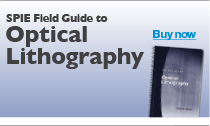High-resolution 3D prototyping
Direct femtosecond laser writing can produce computer-designed structures at a resolution beyond the diffraction limit.
It is not possible to achieve resolutions better than a few micrometers with classic 3D prototyping techniques, such as UV laser microstereolithography, 3D inkjet printing, and laser sintering. Lithographic techniques with superior resolution, e.g., electron beam or atomic force lithography, can only be used to produce relatively simple high-aspect-ratio 2D structures. Furthermore, these fabrication methods are slow and expensive. The process of direct femtosecond laser writing (DLW), however, has unique capabilities that allow the production of computer-designed, fully 3D structures with resolution beyond the diffraction limit. This cannot be achieved with any other competing technology.
 With our DLW technique, i.e., multiphoton polymerization, we are able to construct millimeter-sized structures with sub-100nm spatial resolution.1 In this process, the beam of an ultrafast laser is tightly focused into the volume of a transparent, photosensitive material. Nonlinear absorption within the focal volume initiates the polymerization process. With DLW, the beam focus is moved in three dimensions inside the material, resulting in the fabrication of freestanding, readily assembled, fully 3D structures.
With our DLW technique, i.e., multiphoton polymerization, we are able to construct millimeter-sized structures with sub-100nm spatial resolution.1 In this process, the beam of an ultrafast laser is tightly focused into the volume of a transparent, photosensitive material. Nonlinear absorption within the focal volume initiates the polymerization process. With DLW, the beam focus is moved in three dimensions inside the material, resulting in the fabrication of freestanding, readily assembled, fully 3D structures.
We have implemented DLW on a variety of acrylates (e.g., acrylated polylactic acid), epoxy resins (e.g., SU-8 photoresist), and organically modified ceramics (e.g., zirconium, titanium, germanium, and vanadium silicates, ionogels doped with graphene, and the commercially available ORMOCER). In particular, organically modified ceramics have become very popular because they can be prepared in a straightforward manner using the sol-gel technique, modification, and processing.2 These materials also have high optical quality, post-processing chemical and electrochemical inertness, good mechanical and chemical stability, and can be built without the use of a photoinitiator.3 These materials have applications in photonics, metamaterials, microfluidics, and in the fabrication of scaffolds for cell studies.
In recent work, we used organically modified ceramics for DLW of high-resolution micro-optical components. These components include lenses, prisms, axicons (specialized lenses with conical surfaces),4 high-resolution dielectric crystals,5 and metallic photonic crystals with optical bandgaps (see Figure 1), which can be used as plasmonic sensors.6 To make these metallic photonic crystals, we doped a zirconium silicate surface with a monomer that contained an amine group. We fabricated our dielectric photonic crystals using DLW followed by an electroless plating process to selectively coat the crystals with silver.

One of the advantages of our DLW technique is that readily assembled microstructures can be produced even with strict geometrical design constraints. A complex and dimensionally accurate valve that we successfully assembled in this way is shown in Figure 2.7 The design of this valve (which can be used to control blood flow) required sufficient space for the movement of the flaps, but without compromising the stability of the structure.

Another application for DLW, which has increased dramatically in the last few years, is the fabrication of 3D scaffolds for cell studies and growth. There is much evidence that micrometer-sized topography plays an essential role in determining cell adhesion, and that surface-bound characteristics influence prominent cellular functions such as survival, proliferation, differentiation, migration, or mediator release.8 For specific cell applications, different material properties are required, i.e., bone replacements need strong and wear-resistant materials such as metals and ceramics, whereas soft tissue replacements can be made of polymeric and biological materials. An example of a 3D scaffold that we constructed using DLW for hard-tissue engineering is shown in Figure 3(a).9 We also increased the functions of the structure with calcium-binding peptides and employed a scaffold-on-scaffold approach. The cells growing on the scaffolds can be seen in Figure 3(b). It is clear from this image that the cells prefer to grow on the scaffold rather than the substrate.

Our DLW high-resolution 3D lithography process is a mature and versatile technology. It has applications in a wide variety of fields where freestanding, readily assembled components are required. With no real alternative in 3D nano-manufacturing currently available, the expansion of DLW into other fields is inevitable. We are now working on new materials, as well as optimizing the current materials, for applications in visible and terahertz metamaterials, microfluidics, and biomedicine.
Maria Farsari has been a researcher at the Institute of Electron Structure and Laser since 2003. Her main research interests are multiphoton lithography, laser-based fabrication of 2D and 3D micro- and nanostructures, and materials processing using ultrafast lasers.
